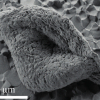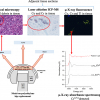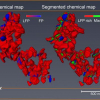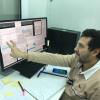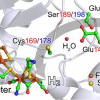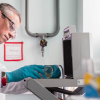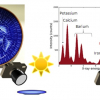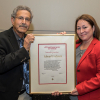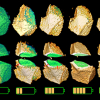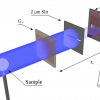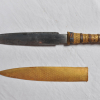X-ray Spectrometry News
Using spectroscopic techniques including Raman and XANES, 3.4 billion year old microfossils from Western Australia’s Strelley Pool formation have been shown to be chemically similar to modern bacteria. This all but confirms the biological origins of the fossils and ranks them among the world’s oldest.
Applications for this prestigious award are invited by 30 November 2018.
Specac has won the Queen’s Award for International Trade.
Synchrotron analysis using X-ray spectroscopies shows potentially harmful metals from implants can find their way into human organs.
A combination of synchrotron techniques at the UK’s Diamond Light Source is being used to research the effect of conservation choices on corrosion of iron cannonballs from the Tudor warship, Mary Rose.
A coherent, nanoscale beam of X-rays from a synchrotron source have been used to map chemical reactions happening inside lithium-ion batteries in three dimensions at the nanoscale.
XRF study shows that the plastic used in many second-hand toys could pose a risk to children’s health.
The SESAME light source in Jordan has seen First Monochromatic Light through the XAFS/XRF spectroscopy beamline.
Nuclear resonant vibrational spectroscopy, a new X-ray spectroscopy technique has been used to study enzymes that can produce hydrogen gas, the understanding of their reactions could be important in developing a clean-fuel economy powered by hydrogen.
New office expansion enables Rigaku to grow in Europe with well-equipped application development and demonstration facility.
Enamelled drinking glasses and popular merchandise can contain potentially toxic levels of lead and cadmium, a study has shown.
Achema 2018 is inviting contributions to the Achema Congress and the PRAXISforums; deadline 22 September 2017.
A cooperation between Messe München India and the Indian Pharma Machinery Manufacturers Association (IPMMA) will collocate events jointly representing 600+ global and Indian companies.
A Japanese research group has developed new techniques to perform analysis and imaging of chemical elements by taking images of a target material using an ordinary, visible-light digital camera with a slight modification, and obtaining X-ray spectra from processed images.
Electron movements in a transient state of a reaction important in biochemical and optoelectronic processes have been captured and, for the first time, directly characterised using ultrafast X-ray spectroscopy at the Department of Energy’s Lawrence Berkeley National Laboratory.
The 2017 Pittsburgh Spectroscopy Award has been made to Edward I. Solomon.
Diamond Light Source has welcomed the first users to the hard X-ray nanoprobe beamline (I14), the latest phase III beamline to be opened.
X-ray images and XANES reveal battery materials’ chemical reactions in five dimensions: 3D space plus time and energy.
Swiss researchers improve an interferometry technique by utilising the interference fringe, an aspect previously viewed as a nuisance, and increase the efficiency of X-ray flux.
An international research team has shown, using XRF that the iron in Tutankhamun’s dagger blade is of meteoritic origin.

